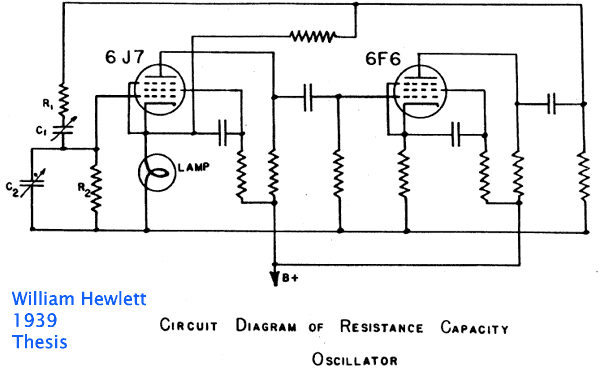OK I know the basic idea of an oscillator, at about a descriptive level. I've been picking around the web to understand oscillation in vacuum tube audio amps, but haven't found a good source yet. They're either descriptive at a lower level than I understand now, or the MIT Vacuum Tube electrical engineering book from the 1950's that starts out with physics of trajectories of charged particles in high voltage fields. I got a few dozen pages in that book before stopping to review calculus and haven't gone back yet.
If anyone knows of a book, maybe an old EE book, that would be great.
***
I had created a very nice oscillator in my guitar amp, unintentionally, luckily (with all your help) figured out what was happening before I ran the amp very long, and fixed it by neatening up the wiring. Experimenting with the amp, I was able to get it to oscillate again, although not as bad as with the problem wiring. I had all the amp controls on 10, except the treble. A guitar was plugged in, and controls all on max. Got a nice hum since the guitar was pointing towards the open chassis. As I turned up the treble past some point, while watching the output tubes, suddenly the output tubes started glowing red inside (didn't cook the plates, since I turned the controls back down right away).
On these old circuits, were these amps really that close to oscillation? Id like to understand what path(s) the feedback is occurring, and how to fix it properly, so that no matter what the setting of any controls, the amp won't go into sub or super audio band oscillation and cook the tubes (and whatever else tends to get cooked).
If anyone knows of a book, maybe an old EE book, that would be great.
***
I had created a very nice oscillator in my guitar amp, unintentionally, luckily (with all your help) figured out what was happening before I ran the amp very long, and fixed it by neatening up the wiring. Experimenting with the amp, I was able to get it to oscillate again, although not as bad as with the problem wiring. I had all the amp controls on 10, except the treble. A guitar was plugged in, and controls all on max. Got a nice hum since the guitar was pointing towards the open chassis. As I turned up the treble past some point, while watching the output tubes, suddenly the output tubes started glowing red inside (didn't cook the plates, since I turned the controls back down right away).
On these old circuits, were these amps really that close to oscillation? Id like to understand what path(s) the feedback is occurring, and how to fix it properly, so that no matter what the setting of any controls, the amp won't go into sub or super audio band oscillation and cook the tubes (and whatever else tends to get cooked).

 ) and signal from the second one is fed back to the first one (here on purpose, in a preamp usually by component to component or wire to wire "invisible/parasitic" capacitance, or chassis/ground small resistance, what does not make it any less real) .
) and signal from the second one is fed back to the first one (here on purpose, in a preamp usually by component to component or wire to wire "invisible/parasitic" capacitance, or chassis/ground small resistance, what does not make it any less real) . )
)

Comment